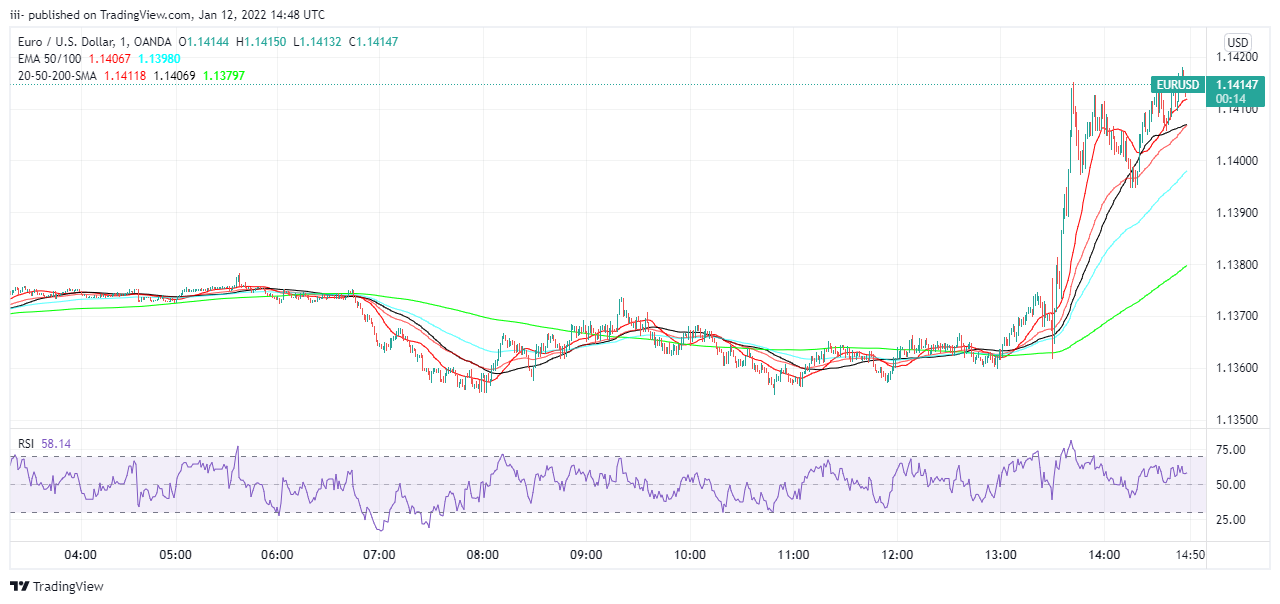
A Weaker Dollar Pushes EUR/USD Beyond 1.1400
Earlier in the American session, the EUR/USD maintained its upward trend and broke over the 1.1400 level for the first time since mid-November.
The broad-based dumping impetus that has surrounded the USD is helping to push the pair higher. According to the latest figures from the United States, the annual CPI increased by 7% in December, as predicted.
An Examination Of The Technical Aspects
EUR/ USD CHART Source: Tradingview.com
USD CHART Source: Tradingview.com
Following the release of US inflation data, the EUR/USD duo continues its gains above the previously noted high, as the Greenback weakens across the board.
In addition, the pair has advanced beyond 1.1385, which represents the 38.2% breakdown of the 1.1691/1.1185 drop, as well as the December monthly high, indicating that if it can maintain gains at this level, a positive continuation might be prolonged in the coming sessions.
The daily chart reveals that the duo is gaining ground above the 20 SMA, which is somewhat bullish, and that chart patterns are increasing in strength.
The 100 SMA continues a negative slope around the 61.8% breakdown of the last drop around 1.1500, which might be a potential positive objective in the near future.
1.1400 while expanding well above positive moving averages, as seen on the 4-hour chart, suggests a strong upward trend with strong bullish potential.
Between then and now, technical indicators have accelerated substantially upward while remaining within positive ranges and are now reaching overbought territory.
Support levels: 1.1385, 1.1345, 1.1305
Resistance levels: 1.1420, 1.1470, 1.1515
Review Of The Fundamentals
After a strong start, investors remained cautious ahead of the release of US inflation data in the second part of the day, with the EUR/USD pair falling mildly from an Asian high of 1.1377.
Stocks rose as a result of a more positive assessment of risk-related emotions, while government bond rates fell, a situation that persisted even after the annual December Consumer Price Index came in at 7% year on year, as predicted, the highest reading in four decades.
The core reading, on the other hand, was raised upward to 5.5% from a year earlier, representing a significant increase above the prior estimate of 4.9%.
A little earlier in the day, Germany released its December Wholesale Price Index, which was raised by only 0.2% compared to the previous month, falling short of the market’s expectations. In the EU, industrial output increased by 2.3% month on month and decreased by 1.5% year on year.









































